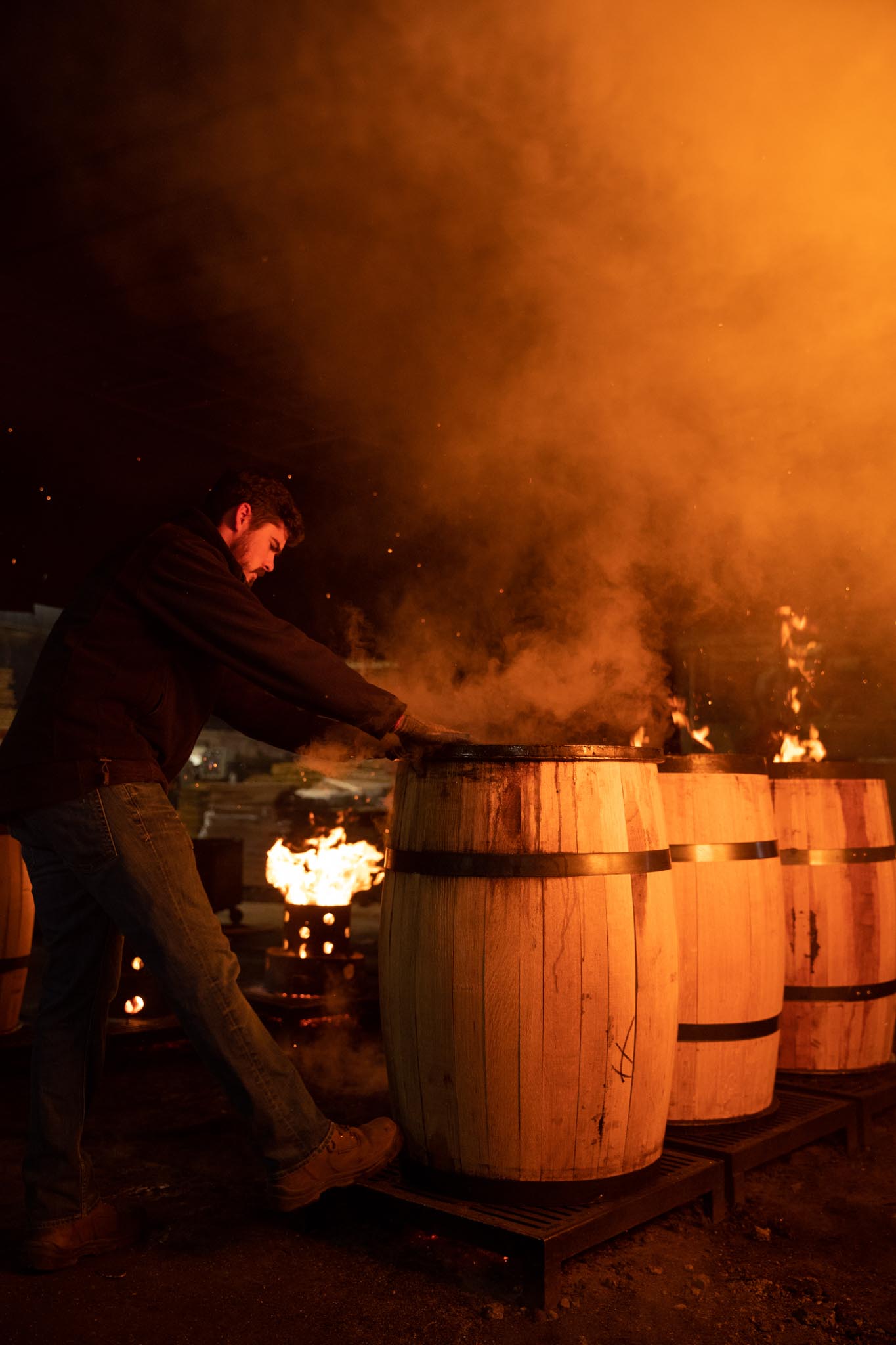The secrets to building whiskey barrels
Whiskey fans drive miles to see distilleries, line up to talk to master distillers and wait hours to buy rare bottles. They talk about whiskey on social media, post photos of their prizes and sometimes resell them illegally for huge sums.
Far less discussed are whiskey barrels: masterpieces of engineering that are essential to the goodness of their favorite bourbons and ryes. The effort required to form raw oak into a cask that’s durable and weighs more than 100 pounds ensures only a few apply for the job of barrel maker, or cooper.
Becoming a cooper takes years of training to acquire an eye for wood nuances, steady hands with blunt-force tools and sheer muscle to assemble 32 oak staves, six steel hoops and two wood heads into a unified whole.
“Wood is a natural product, and each tree has its own personality and unique set of traits,” says Brad Boswell, CEO of Independent Stave Company. “To train a team of coopers to carefully manage those variables and produce significant volumes of high-quality barrels takes years.”
Boswell’s international company is based in Lebanon, Missouri, and is the world’s largest oak barrel maker. In Kentucky alone, it has two stave mills (Morehead Wood Products served by Fleming- Mason Energy and Benton Wood Products served by West Kentucky RECC), two cooperages (Kentucky Bourbon Barrel in Louisville and Kentucky Cooperage in Lebanon served by Inter-County Energy) and a third under construction in Morehead.
The ideal United States hardwood for barrel making is quercus alba, a white oak that grows in abundance in a swath of forests stretching from the Ozark Mountains eastward to Appalachia. American white oak is strong and has a tight, straight grain that’s nearly leakproof. Yet it’s malleable to the cooper’s bidding when cut into staves—the slats of wood that make up the barrel’s side walls—and bent to form the barrel’s curved middle.
American white oak also has fewer tannins, the compounds that make spirits astringent, than other woods. It contains high amounts of hemicellulose and lignin that lend butterscotch, almond, caramel and vanilla notes to whiskey.

Coopering: Serious skills required
Raising a barrel begins when a cooper selects roughly 32 staves from a massive pile and places them into a metal stand. The staves are tightened slightly with a steel cable while a temporary hoop holds the staves at the bottom. The cooper then hammers the staves downward to force them tightly together and squeezes them tighter again with the cable. A temporary hoop is added at the top to hold the staves together during steaming, which softens the wood so it can be bent at the staves’ center.
Temporary hoops are replaced with permanent steel hoops as the barrel heads to charring. Barrels are placed over controlled wood or gas fires that char their interiors to levels of 1 to 4. A barrel charred to level 4 spends the longest time over the fire, which creates significant “alligator” cracking in the wood. Deeper and darker cracks permit greater whiskey penetration and bolder flavor impacts.
“It’s all a nightmare that I wouldn’t recommend for anyone,” jokes Paul McLaughlin, president and owner of Louisville’s Kelvin Cooperage, a barrel maker and repair company based in Scotland. “We’re a very traditional cooperage: not automated or mechanized. Such hands-on work is hard physical work.”
The Brown-Forman Cooperage in Louisville is a bit more automated, especially on the charring line, where massive gas-fired jets char the barrels in bursts of about 45 seconds.
“Pretty impressive, right?” Chris Morris, the company’s master distiller, says with a wry grin during a 2019 press tour of the facility. “Our ability to make barrels quickly and to a wide range of specifications for our whiskeys is unparalleled.”
After their smoldering interiors are extinguished, coopers then fit each barrel with a top and bottom head before cutting a hole into the barrel’s side; through that, whiskey will be pumped in.

Aging: When the barrel becomes boss
As whiskey ages, time and temperature are the only influences on its flavor.
“I view the barrel as a pump,” says Aaron Willett, cooperage manager at Speyside Cooperage in Shepherdsville. “As seasons change, whiskey is pumped into and out of the barrel’s walls.”
More specifically, Kentucky’s scorching summers build heat within the barrel, which increases the interior pressure and forces the whiskey deep into the wood. It remains there, extracting flavor compounds from the wood until the weather cools during fall and winter and the whiskey retreats. The cycle renews annually with spring and summer.
“It’s pretty amazing that something as simple as an oak barrel has such incredible influence on whatever liquid you age in it,” says Denny Potter, master distiller at Maker’s Mark Distillery, served by Inter- County Energy. “We can do everything we know how to influence the outcome of a whiskey through fermentation and distilling, but once we leave it in the barrel, nature takes over. I think it’s cool.”

